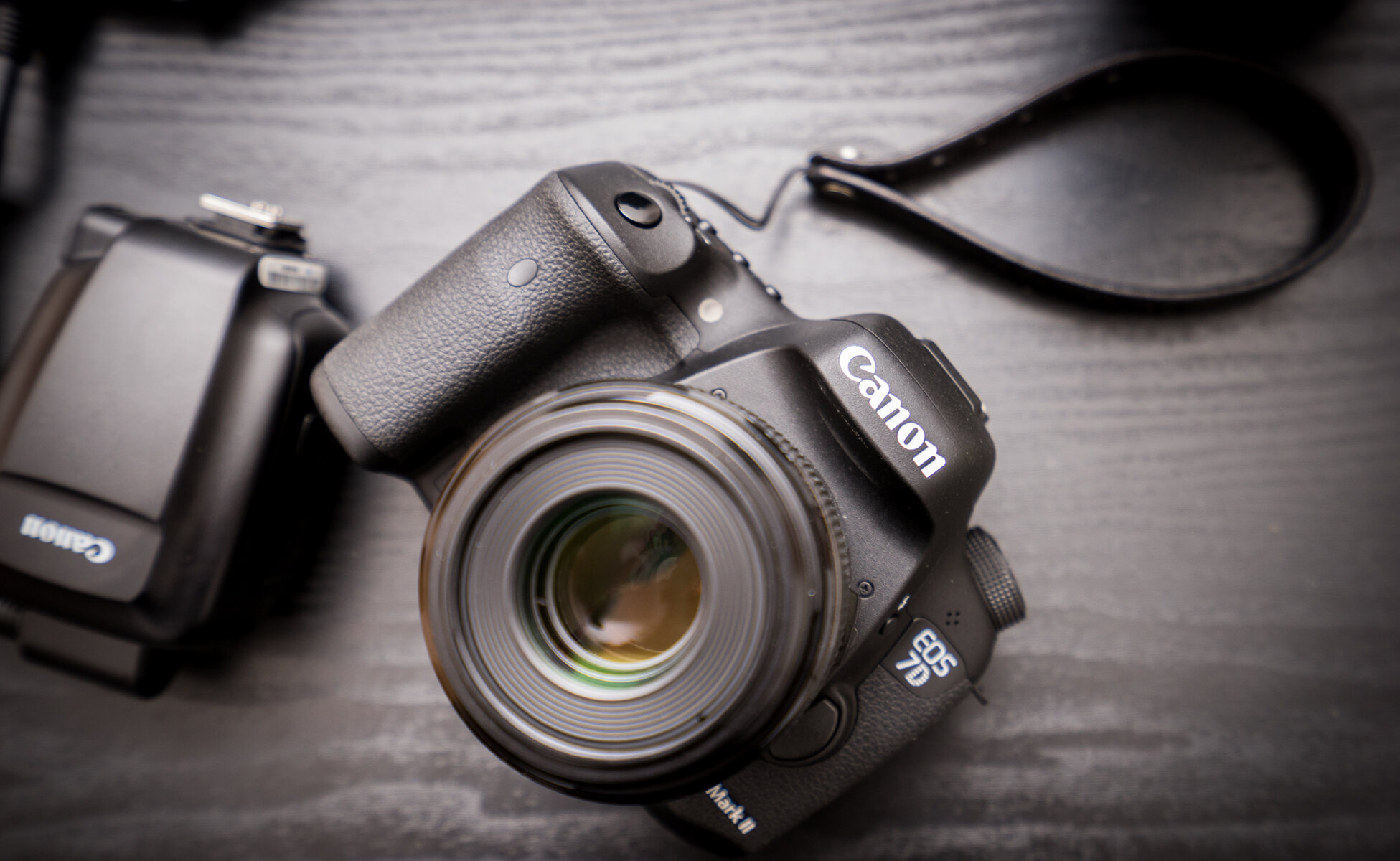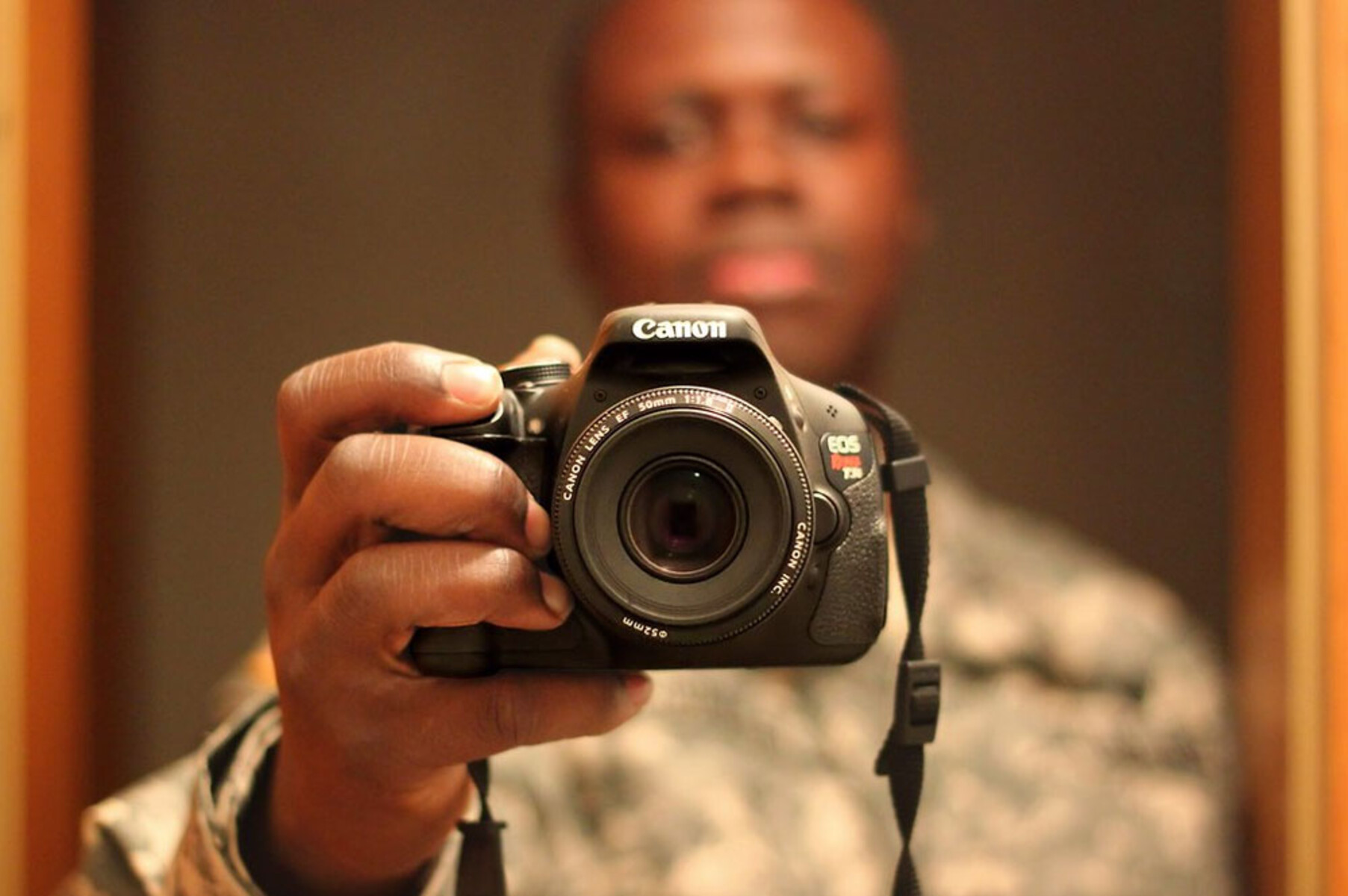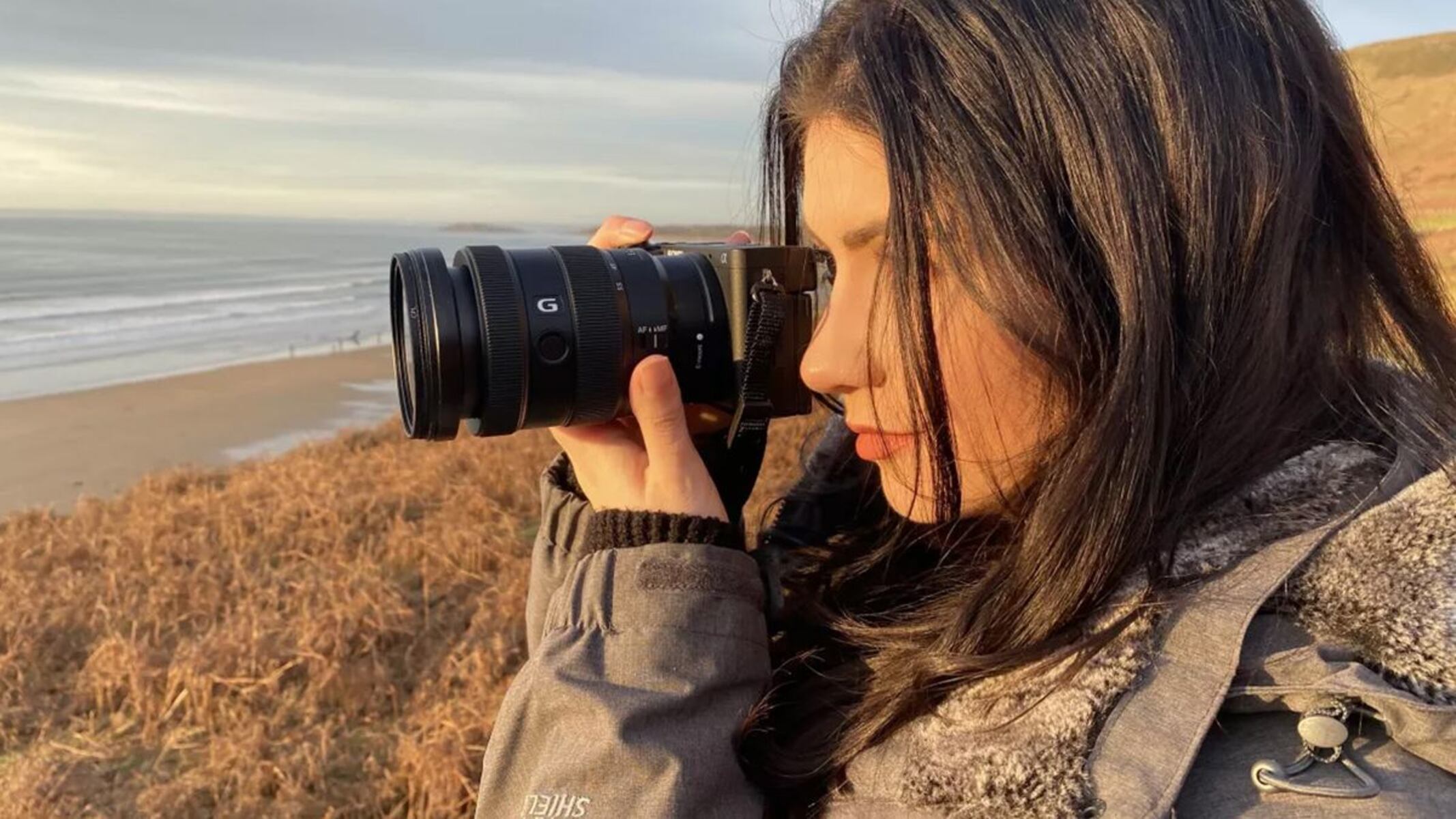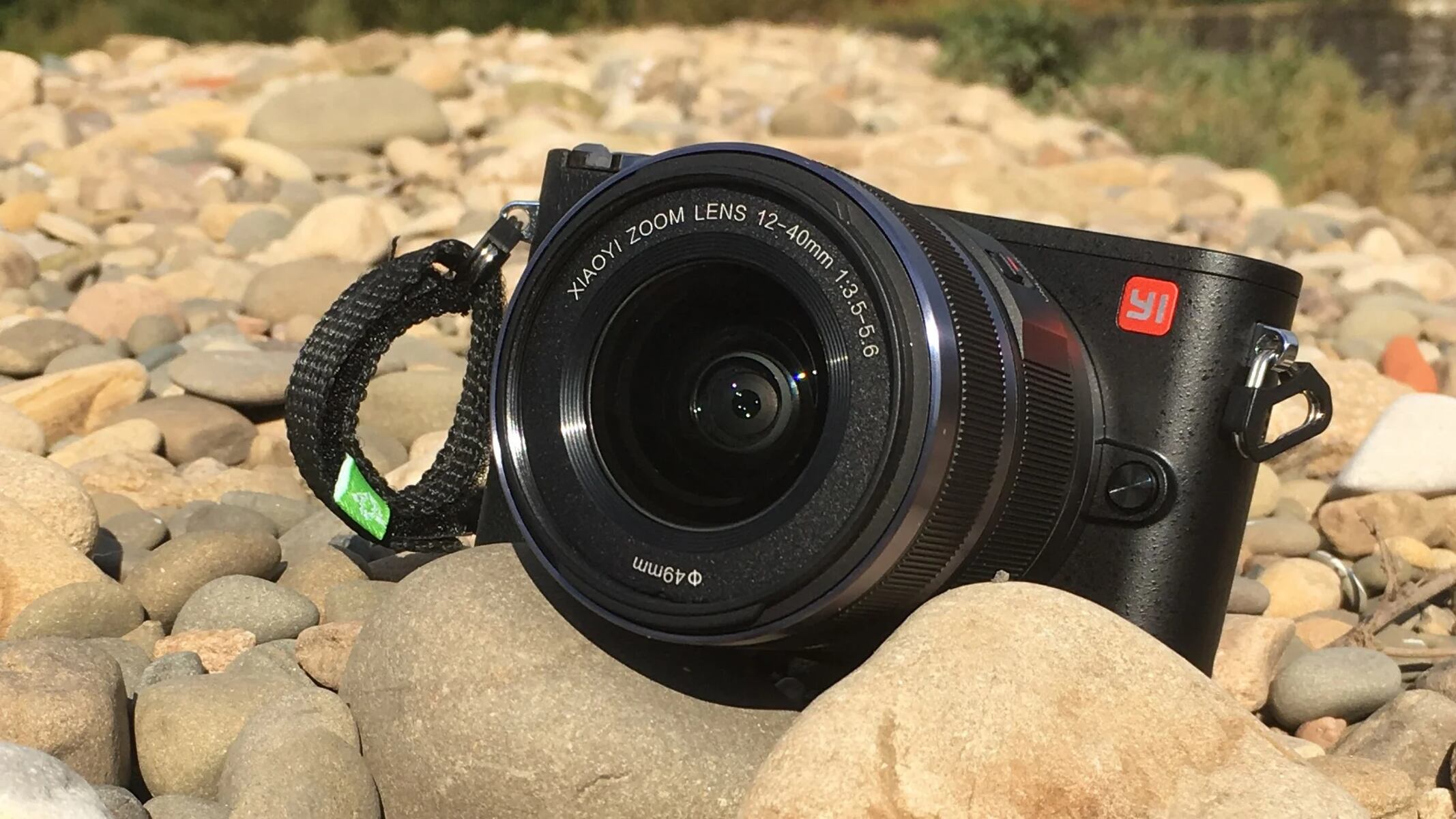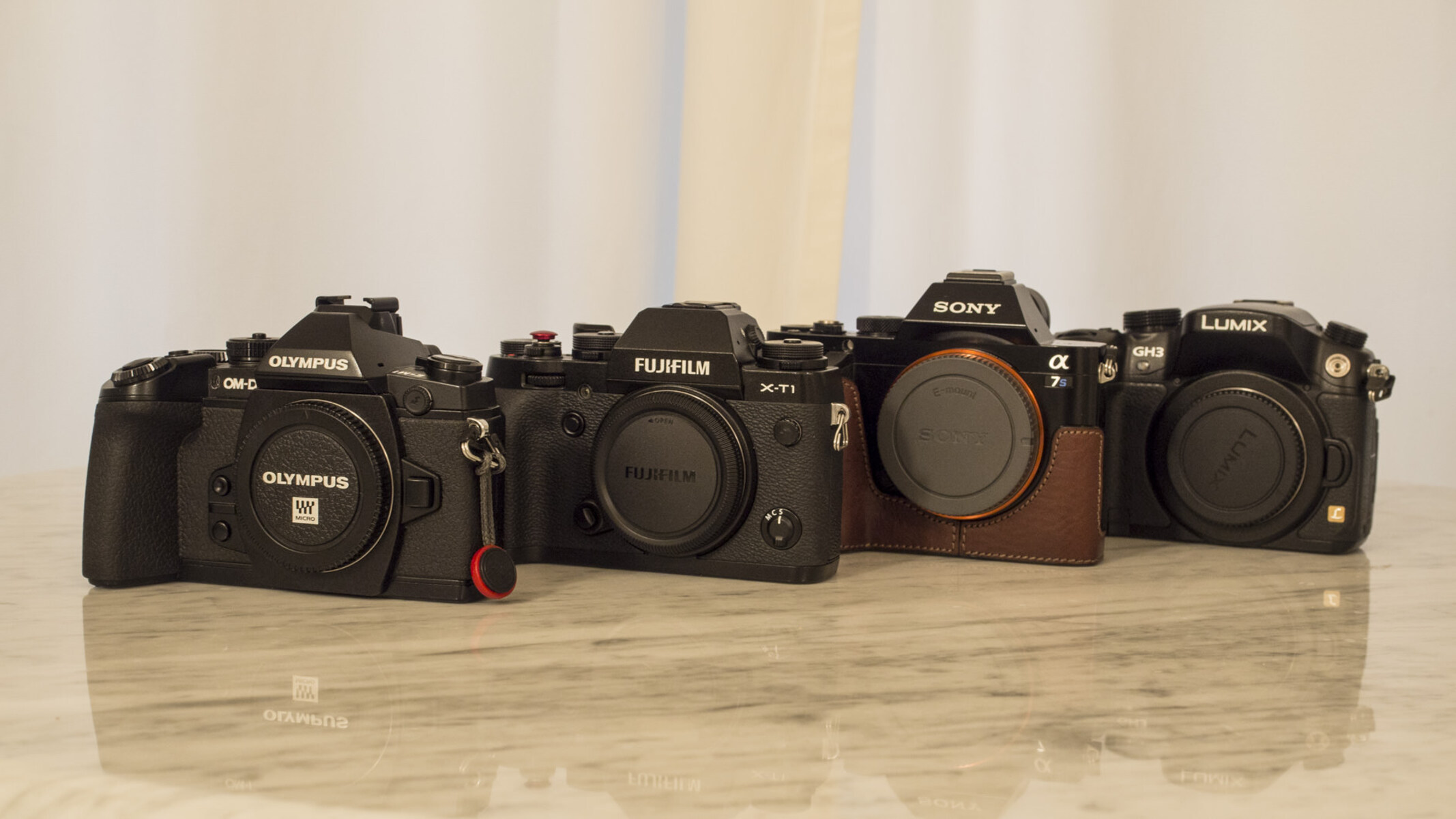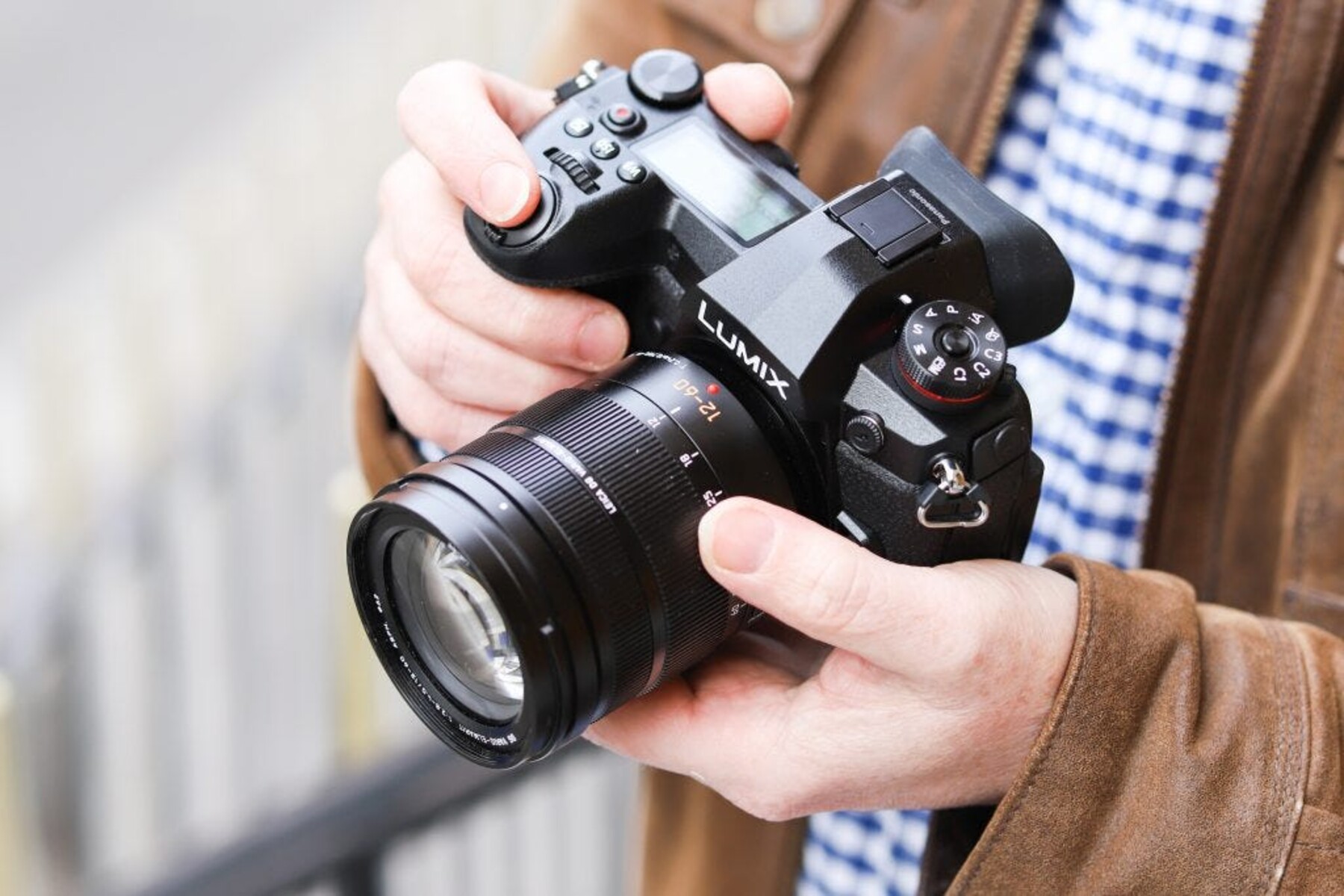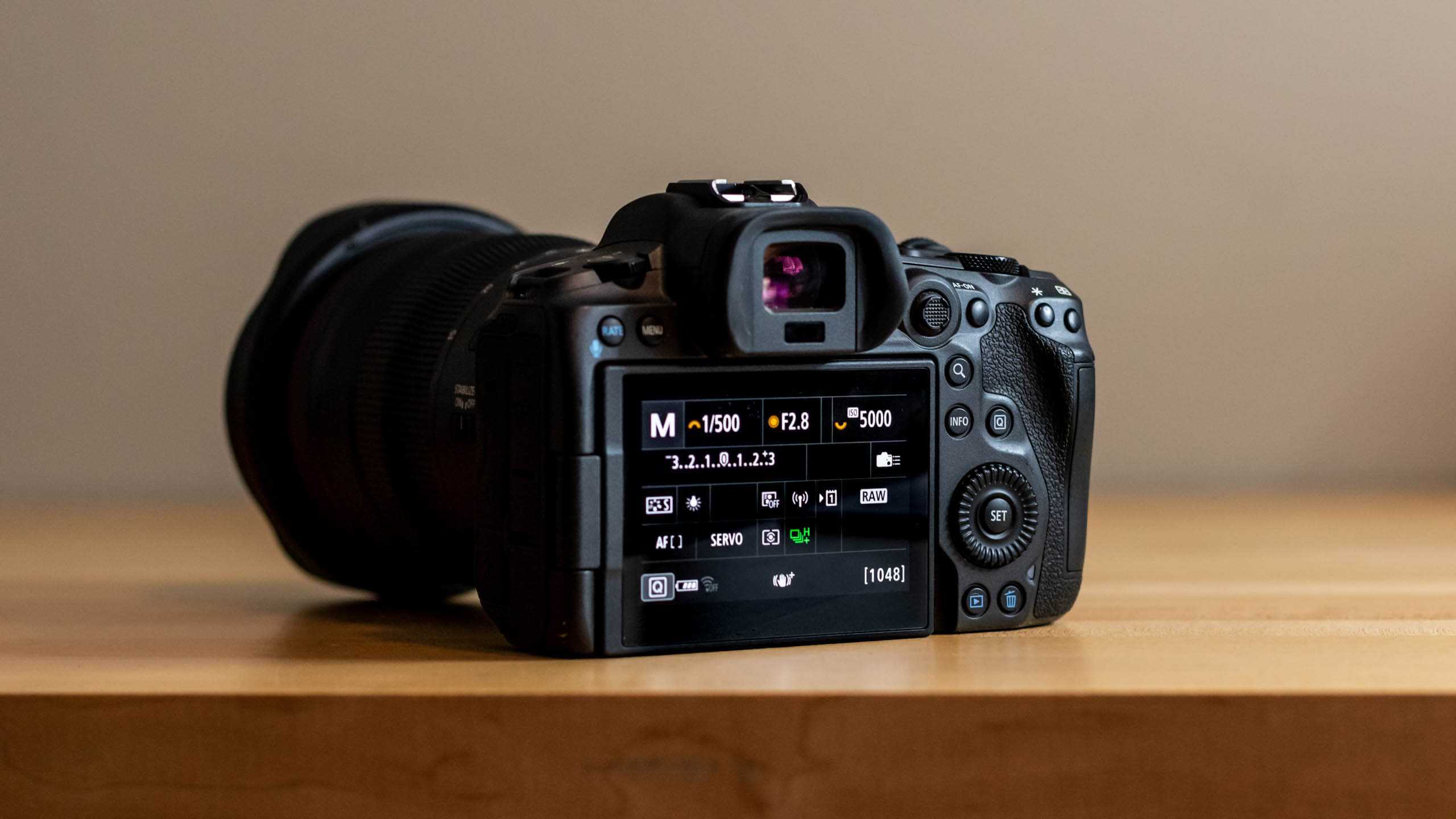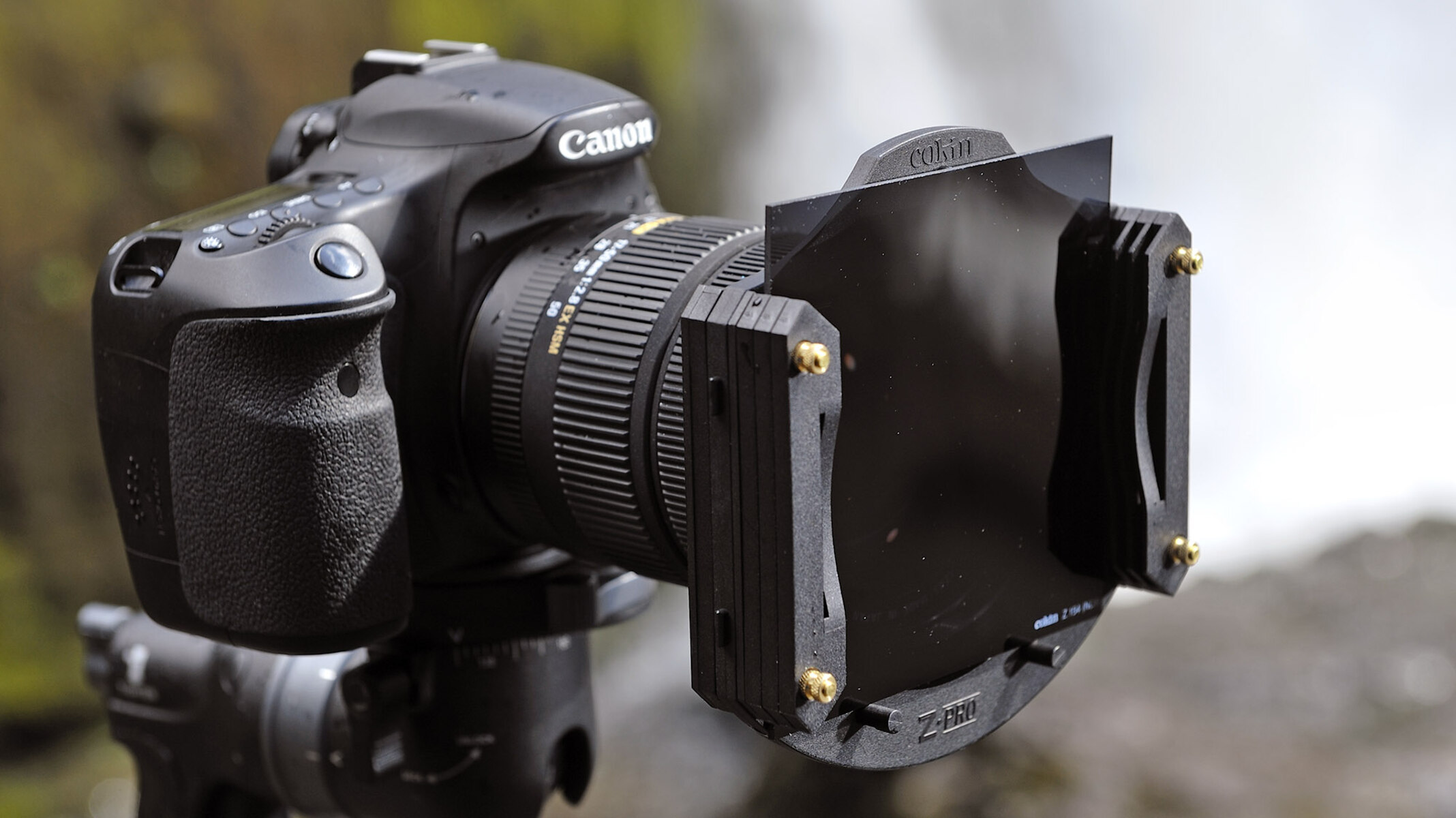Introduction
Welcome to the world of portrait photography with mirrorless cameras! Capturing stunning portraits is a blend of technical skill, artistic vision, and understanding of the subject. With the rise of mirrorless cameras, photographers now have access to lightweight, versatile, and high-performance tools for creating captivating portraits.
In this guide, we will explore the essential techniques and considerations for taking remarkable portraits with a mirrorless camera. Whether you are a seasoned photographer looking to transition to a mirrorless system or a beginner eager to delve into the art of portrait photography, this comprehensive resource will equip you with the knowledge and skills to elevate your portrait-taking capabilities.
Throughout this guide, we will cover the crucial aspects of portrait photography, including selecting the right mirrorless camera, understanding the nuances of portrait photography, optimizing camera settings for portrait mode, harnessing natural and artificial light, choosing the ideal lens for portraits, directing and posing your subject, mastering composition and framing, and refining your portrait photos through editing.
By the end of this journey, you will have gained a deeper insight into the intricacies of portrait photography and the tools and techniques required to capture compelling and expressive portraits with a mirrorless camera. So, grab your mirrorless camera, unleash your creativity, and let's embark on this exciting exploration of the art of portrait photography.
Choosing the Right Mirrorless Camera
When venturing into portrait photography, selecting the right mirrorless camera is a pivotal decision that significantly influences the quality and versatility of your portrait images. Mirrorless cameras have gained immense popularity due to their compact form factor, advanced features, and exceptional image quality. Here are key factors to consider when choosing the ideal mirrorless camera for portrait photography:
- Sensor Size: The sensor size plays a crucial role in capturing stunning portrait photos. Cameras with larger sensors, such as full-frame or APS-C sensors, excel in producing images with beautiful bokeh and superior low-light performance, enhancing the overall aesthetic of portraits.
- Resolution: High-resolution sensors enable the capture of intricate details, making them ideal for creating large prints and allowing for flexibility in post-processing without compromising image quality.
- Autofocus System: A reliable and advanced autofocus system is essential for swiftly and accurately locking focus on the subject, especially when shooting portraits with shallow depth of field.
- Image Stabilization: In-body or lens-based image stabilization minimizes the impact of camera shake, ensuring sharp and crisp portrait images, particularly in low-light conditions or when using telephoto lenses.
- Electronic Viewfinder (EVF) and Tilting Screen: An EVF provides a real-time preview of exposure and white balance, offering a seamless shooting experience. A tilting or articulating screen facilitates shooting from various angles and perspectives, enhancing creativity in portrait compositions.
- Customization and Ergonomics: Intuitive controls, customizable buttons, and a comfortable grip contribute to a more efficient and enjoyable shooting experience, allowing photographers to focus on capturing compelling portraits without being hindered by the camera’s interface.
- Compatibility and Lens Selection: Consider the availability and diversity of lenses compatible with the camera system, as a wide selection of lenses, including prime and zoom lenses with varying focal lengths, empowers photographers to explore diverse styles and techniques in portrait photography.
By carefully evaluating these factors and considering your specific photography needs and preferences, you can make an informed decision when choosing a mirrorless camera that aligns with your vision for creating exceptional portraits.
Understanding Portrait Photography
Portrait photography is an art form that goes beyond simply capturing a person’s likeness. It aims to convey the subject’s personality, emotions, and unique essence through carefully composed images. Understanding the fundamental aspects of portrait photography is essential for creating impactful and visually compelling portraits. Here are key elements to consider:
- Connection and Expression: Establishing a genuine connection with the subject is paramount in portrait photography. Encouraging natural expressions and emotions can result in authentic and captivating portraits that resonate with viewers.
- Composition and Framing: Thoughtful composition and framing play a pivotal role in portraying the subject in a visually engaging manner. Techniques such as the rule of thirds, leading lines, and negative space can enhance the overall composition of portrait images.
- Lighting Techniques: Mastering light is fundamental in portrait photography. Understanding the interplay of light and shadow enables photographers to sculpt the subject’s features, create mood, and evoke emotions within the portrait. Techniques such as Rembrandt lighting, butterfly lighting, and split lighting can be employed to achieve diverse effects.
- Posing and Body Language: Guiding the subject’s poses and body language is an art in itself. Effective posing techniques can accentuate the subject’s best features, convey a desired mood, and create a sense of balance and harmony within the frame.
- Environmental Portraiture: Incorporating elements of the subject’s environment or surroundings can add depth and context to portrait images, providing insights into the subject’s lifestyle, profession, or personal story.
- Emotional Impact: Successful portrait photography evokes an emotional response from the viewer. Whether it’s joy, introspection, strength, or vulnerability, the ability to elicit emotions through portraits is a hallmark of exceptional portrait photography.
By comprehensively understanding these elements and honing the associated skills, photographers can elevate their portrait photography to new heights, capturing evocative and enduring images that transcend mere visual representation.
Setting Up Your Mirrorless Camera for Portrait Mode
Optimizing your mirrorless camera’s settings for portrait photography is crucial for achieving professional-quality results. By customizing key parameters and modes, you can enhance the camera’s performance specifically for capturing stunning portraits. Here are essential considerations when setting up your mirrorless camera for portrait mode:
- Aperture Priority Mode: Utilizing the aperture priority mode allows you to control the depth of field, a critical element in portrait photography. Selecting a wide aperture (e.g., f/1.8 to f/4) enables you to achieve a shallow depth of field, effectively isolating the subject from the background and creating beautiful bokeh.
- Single Point Autofocus: Engaging the single point autofocus mode enables precise focusing on the subject’s eyes, which are often the focal point in portraits. This ensures that the subject’s eyes are sharp and in clear focus, adding impact and depth to the portrait.
- Optimal ISO Setting: Balancing the ISO setting to achieve the desired exposure without introducing excessive noise is crucial. In well-lit conditions, maintaining a low ISO (e.g., ISO 100 to 400) preserves image quality, while in low-light environments, a higher ISO may be necessary to maintain proper exposure.
- White Balance Adjustment: Setting the appropriate white balance ensures accurate color representation in portrait images. Consider adjusting the white balance based on the prevailing lighting conditions, such as daylight, shade, cloudy, or artificial lighting, to achieve natural and pleasing skin tones.
- Utilizing Exposure Compensation: Employing exposure compensation allows for fine-tuning the exposure to achieve optimal brightness and tonality in the portrait. This feature is particularly useful when dealing with challenging lighting situations or when emphasizing a specific mood or atmosphere.
- Utilizing Face Detection and Eye Autofocus: Many mirrorless cameras offer advanced features such as face detection and eye autofocus, which intelligently identify and prioritize the subject’s face and eyes for precise and swift focusing, enhancing the accuracy of portrait compositions.
By understanding and implementing these tailored settings, you can harness the full potential of your mirrorless camera for portrait photography, resulting in captivating and professionally executed portraits that showcase the beauty and personality of your subjects.
Using Natural Light for Portrait Photography
Natural light is a versatile and compelling tool for capturing captivating portrait images. When harnessed effectively, natural light can infuse portraits with a soft, flattering glow and create a natural, authentic ambiance. Here are essential tips for utilizing natural light in portrait photography:
- Golden Hour Magic: Shooting during the golden hour, the period shortly after sunrise or before sunset, bathes the scene in warm, diffused light, resulting in a flattering and ethereal quality that enhances the mood and atmosphere of portraits.
- Soft Overcast Light: Overcast or cloudy days provide a naturally diffused and soft light source, ideal for producing even, gentle illumination without harsh shadows. This type of light is particularly flattering for portrait subjects, as it minimizes contrast and accentuates natural skin tones.
- Utilizing Window Light: Indirect natural light streaming through windows can create beautiful, softly illuminated portraits. Positioning the subject near a window allows for the creation of elegant and naturally lit indoor portraits, with the window serving as a large, diffused light source.
- Open Shade: Shooting in open shade, such as under a canopy of trees or near a building, shields the subject from direct sunlight, resulting in soft, flattering illumination while minimizing harsh highlights and shadows.
- Backlighting and Rim Light: Embracing backlighting can produce striking and artistic portraits, with the light source positioned behind the subject, creating a halo effect or rim light that adds depth and visual interest to the image.
- Reflectors and Diffusers: Using reflectors to bounce and redirect natural light, or employing diffusers to soften and spread harsh sunlight, allows for precise control over the quality and direction of natural light, enabling photographers to sculpt and enhance the illumination for portraits.
By leveraging the nuances of natural light and understanding its characteristics, photographers can harness its inherent beauty to create evocative and timeless portraits that resonate with authenticity and emotional depth.
Using Artificial Light for Portrait Photography
Artificial lighting offers photographers precise control over the illumination of portrait subjects, allowing for creative expression and the ability to craft striking and visually impactful portraits. Whether in a studio setting or on location, understanding the principles of artificial light and its various applications is essential for achieving professional-quality portrait images. Here are key considerations for using artificial light in portrait photography:
- Studio Lighting Setups: Familiarize yourself with different studio lighting configurations, including the classic three-point lighting setup comprising key, fill, and hair or background lights. This setup provides control over the illumination and shadowing of the subject, allowing for versatile and polished portrait compositions.
- Continuous Lighting: Utilizing continuous lighting sources, such as LED panels or tungsten lights, offers a real-time preview of the lighting effect, making it easier to visualize and adjust the illumination for portraits. Continuous lighting is particularly beneficial for beginners, as it provides immediate feedback on the impact of light placement and intensity.
- Off-Camera Flash Techniques: Mastering off-camera flash techniques, such as using speedlights or strobes, expands the creative possibilities for portrait photography. Techniques such as bounce flash, diffused lighting, and gelling the flash for color effects can elevate the visual impact of portrait images.
- Modifying Light Quality: Employ light modifiers, including softboxes, umbrellas, and beauty dishes, to shape and control the quality of artificial light. These modifiers can soften harsh light, create pleasing catchlights in the subject’s eyes, and sculpt the illumination to enhance facial features and textures.
- Color Temperature and White Balance: Understanding color temperature and white balance settings when working with artificial light sources is essential for achieving accurate and natural-looking skin tones in portraits. Balancing the color temperature of artificial light with the camera’s white balance settings ensures consistent and pleasing color rendition.
- Creative Lighting Effects: Experiment with creative lighting effects, such as gels, grids, and patterns, to introduce visual interest and mood into portrait compositions. These techniques can add a touch of drama, warmth, or vibrancy to the portraits, allowing for artistic expression and storytelling through light.
By mastering the art of artificial lighting and exploring its diverse applications, photographers can unleash their creativity and produce captivating portrait images that showcase the subject with precision, depth, and visual allure.
Choosing the Right Lens for Portraits
Selecting the appropriate lens is a critical decision that significantly influences the visual aesthetics and storytelling capabilities of portrait photography. The choice of lens not only impacts the composition and perspective of the image but also contributes to the overall mood and style of the portraits. Here are key factors to consider when choosing the right lens for capturing compelling portraits:
- Focal Length and Perspective: Prime lenses with focal lengths between 85mm and 135mm are popular choices for portrait photography due to their flattering perspective and ability to compress features, resulting in pleasing and natural-looking portraits. These focal lengths allow photographers to maintain a comfortable shooting distance while achieving a shallow depth of field and beautiful background blur.
- Aperture and Bokeh: Lenses with wide maximum apertures, such as f/1.8 or f/1.4, excel in producing creamy bokeh and isolating the subject from the background, creating a compelling separation and drawing attention to the subject’s features. The ability to achieve a shallow depth of field enhances the visual impact and aesthetic appeal of portrait images.
- Optical Quality and Sharpness: Prioritize lenses known for their exceptional optical quality, sharpness, and ability to render fine details. A high-quality lens not only ensures the clarity and definition of the subject but also contributes to the overall professional look and feel of the portraits.
- Focusing Speed and Accuracy: A lens with swift and precise autofocus performance is essential for capturing sharp and well-focused portraits, particularly when working with moving subjects or shooting in dynamic environments. Look for lenses equipped with advanced autofocus systems to ensure reliable and consistent focusing.
- Character and Rendering: Each lens possesses a distinct character and rendering style, influencing the overall look and feel of the portraits. Consider the specific visual characteristics of the lens, such as color rendition, contrast, and the rendering of out-of-focus areas, to align with your artistic vision and desired portrayal of the subject.
- Versatility and Adaptability: While prime lenses are favored for their optical excellence and wide apertures, zoom lenses with a moderate telephoto range, such as 24-70mm or 70-200mm, offer versatility and flexibility in capturing a range of compositions and perspectives, making them suitable for various portrait scenarios.
By carefully evaluating these factors and understanding the unique attributes of different lenses, photographers can make informed decisions when selecting the right lens for portrait photography, ultimately enhancing their ability to create impactful, visually compelling, and emotionally resonant portraits.
Posing and Directing Your Subject
Effective posing and direction are instrumental in capturing engaging and expressive portraits that convey the subject’s personality and story. As a photographer, your guidance and communication play a pivotal role in eliciting natural and compelling poses from your subjects. Here are essential tips for posing and directing your subjects during portrait sessions:
- Establishing Rapport: Building a rapport with your subject is the foundation for successful posing and direction. Establishing a comfortable and relaxed atmosphere encourages the subject to express themselves authentically, resulting in genuine and captivating portraits.
- Observing Natural Gestures: Encourage your subject to adopt natural and relaxed gestures and expressions. Observing their spontaneous movements and subtle mannerisms can lead to candid and emotive portraits that reflect their true character.
- Guiding Body Language: Direct your subject’s body language to convey the desired mood and narrative. Simple adjustments to posture, hand positioning, and facial expressions can significantly impact the emotional resonance and visual storytelling of the portraits.
- Emphasizing Facial Features: Highlight the subject’s facial features by guiding them to angle their face, adjust their gaze, and convey specific emotions. Directing the positioning of the eyes, chin, and shoulders can enhance the subject’s presence and engagement with the viewer.
- Creating Dynamic Poses: Explore a variety of dynamic poses and compositions to add visual interest and energy to the portraits. Experiment with standing, sitting, or reclining poses, as well as incorporating movement or interaction with props to infuse vitality and narrative depth into the images.
- Encouraging Expression and Emotion: Prompt your subject to express genuine emotions and convey their inner feelings through their facial expressions and body language. Cultivating a sense of trust and openness allows for the portrayal of authentic and evocative emotions in the portraits.
- Providing Clear and Gentle Guidance: Offer clear and concise instructions to your subject while maintaining a supportive and encouraging demeanor. Articulate your vision for the portraits and provide gentle feedback and direction to achieve the desired poses and expressions.
By mastering the art of posing and direction, photographers can draw out the unique essence and character of their subjects, resulting in portraits that resonate with depth, emotion, and visual allure.
Composition and Framing for Portrait Photography
Composition and framing are pivotal elements that shape the visual impact and storytelling of portrait photography. Thoughtful consideration of these aspects allows photographers to create compelling and visually engaging portraits that resonate with the viewer. Here are essential considerations for composition and framing in portrait photography:
- Rule of Thirds: Utilize the rule of thirds to create balanced and visually dynamic compositions. Positioning the subject’s key features or points of interest along the intersecting lines or at the intersections themselves adds visual interest and draws the viewer’s gaze into the portrait.
- Leading Lines and Negative Space: Incorporate leading lines and negative space to guide the viewer’s eye and emphasize the subject within the frame. Thoughtfully composed lines and spaces can add depth, context, and visual flow to the portraits, enhancing their overall impact.
- Background Selection and Depth: Carefully select and manage the background to complement the subject and contribute to the narrative of the portrait. Consider elements such as depth of field, textures, and colors to create a harmonious and visually appealing backdrop that enhances the subject’s presence.
- Aspect Ratios and Orientation: Explore different aspect ratios and orientations, such as landscape and portrait orientations, to convey varying moods and visual dynamics in the portraits. The choice of aspect ratio and orientation can influence the composition’s balance and the portrayal of the subject’s character and environment.
- Environmental Portraiture: Embrace environmental portraiture by incorporating the subject’s surroundings to provide context and narrative depth. Balancing the subject with their environment adds layers of storytelling and visual interest, offering insights into the subject’s lifestyle, profession, or personal story.
- Depth and Layering: Create depth and dimension within the portraits by incorporating foreground elements, mid-ground features, and background elements. Layering the composition adds visual complexity and a sense of spatial depth, enriching the narrative and visual allure of the portraits.
- Facial Framing and Negative Space: Experiment with framing the subject’s face within the composition, using elements such as hair, hands, or architectural features to frame the facial area. Additionally, judicious use of negative space around the subject can draw attention to the subject’s expression and convey a sense of intimacy.
By mastering the principles of composition and framing, photographers can elevate their portrait photography, creating images that captivate the viewer with their visual allure, narrative depth, and emotional resonance.
Editing Your Portrait Photos
Post-processing plays a crucial role in refining and enhancing the visual impact of portrait photos, allowing photographers to fine-tune the mood, aesthetics, and overall presentation of their images. Through skillful editing, photographers can elevate their portraits to new levels of artistry and expressiveness. Here are essential considerations for editing portrait photos:
- Color Correction and White Balance: Begin the editing process by ensuring accurate color representation and white balance adjustments. Correct any color casts and ensure natural and pleasing skin tones, enhancing the overall visual harmony of the portraits.
- Exposure and Contrast Adjustments: Fine-tune exposure and contrast to optimize the tonal range and dynamic impact of the portraits. Balancing highlights, shadows, and midtones contributes to the overall clarity and visual depth of the images.
- Skin Retouching and Blemish Removal: Employ subtle skin retouching techniques to enhance the subject’s appearance while maintaining a natural and authentic look. Address blemishes, uneven skin tones, and imperfections, ensuring a polished yet realistic portrayal of the subject.
- Sharpening and Detail Enhancement: Enhance the sharpness and fine details of the subject’s features, clothing, and surroundings to ensure a crisp and defined presentation. Carefully apply sharpening techniques to accentuate textures and refine the overall clarity of the portraits.
- Portrait-Specific Editing Tools: Utilize specialized editing tools tailored for portrait photography, such as skin smoothing, eye enhancement, and teeth whitening features, to refine and accentuate the subject’s facial features and expressions.
- Background and Distraction Removal: Eliminate distractions and unwanted elements from the background to direct the viewer’s focus toward the subject. Clean and uncluttered backgrounds contribute to a more impactful and visually cohesive presentation of the portraits.
- Creative Effects and Stylistic Enhancements: Explore creative effects, such as black and white conversion, color grading, and toning, to imbue the portraits with a distinct mood and visual style. Experiment with stylistic enhancements to add depth and character to the images while aligning with the intended narrative.
By approaching the editing process with precision and artistic intent, photographers can refine their portrait photos, ensuring that each image conveys the desired mood, expression, and visual allure. Through skillful editing, portraits can transcend mere representation, becoming compelling works of art that resonate with depth and emotion.







